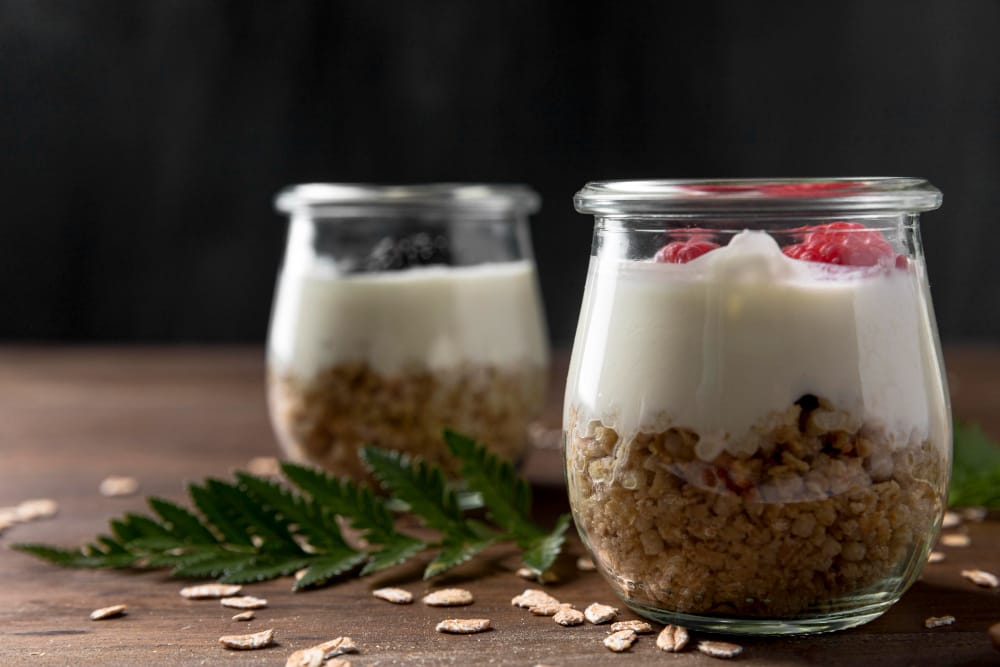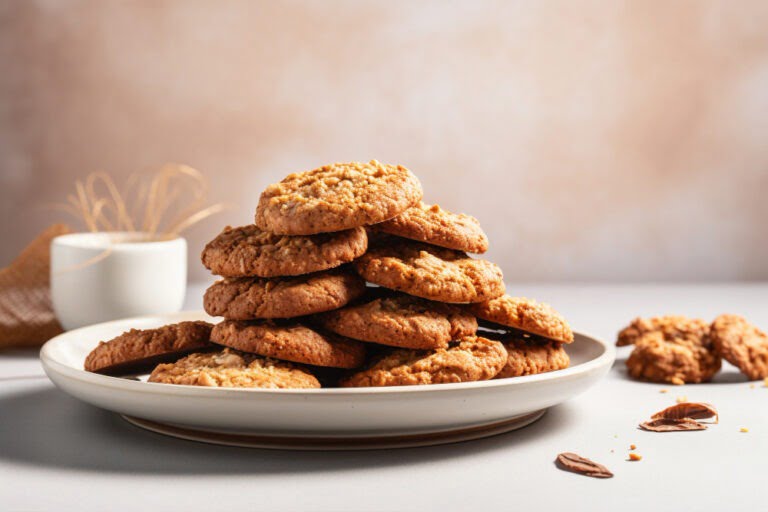FREE SHIPPING OVER $50
Stop Counting Calories: The One Simple Food Swap That Controls Hunger and Melts Fat

It’s time to be honest: if counting every single calorie worked, everyone would be walking around with their dream body. But the reality is that the diet cycle—the relentless tracking, the constant hunger, and the inevitable rebound—is exhausting and unsustainable. We’ve been trained to believe that the number on a package is the key to weight loss, yet the sheer effort of measuring, weighing, and logging often leads to burnout and failure.
What if the secret to losing weight and keeping it off wasn’t about micromanaging numbers, but about making a foundational shift in what you eat? You can finally step off the calorie-counting treadmill and still see incredible, lasting results. The key is simpler than you think: stop trying to restrict your way to health, and instead, focus on making a single, powerful food swap. We’re talking about replacing highly-processed foods with their minimally-processed, whole-food counterparts. This one change is scientifically proven to harness your body’s natural fat-burning and hunger-controlling mechanisms.
The Hidden Power of Minimally Processed Foods
For years, diet culture focused exclusively on macronutrients (protein, carbs, fat) and total calorie count. But groundbreaking research now points to a completely overlooked factor: the degree of food processing. This is the simple yet profound answer to the question posed in the title. The swap from ultra-processed to minimally processed foods is the secret to controlling hunger and accelerating fat loss, even if the calorie counts appear similar on paper.
What is the Real Difference? It’s All About Structure
The difference between a handful of raw almonds and a bag of flavored almond-based crackers goes far beyond added salt and sugar; it’s about the structural integrity of the food itself.
- Ultra-Processed Foods (UPFs): These items—packaged snacks, sugary drinks, pre-made meals, and many commercial breakfast cereals—have been broken down, stripped of natural fiber and water, and reassembled with added fats, sugars, and artificial ingredients. Your body can digest and absorb them instantly, almost effortlessly.
- Minimally Processed Foods (MPFs): These are foods as close to their natural state as possible: a whole apple, a handful of lentils, steel-cut oats, or a piece of lean fish. They might be cleaned, chopped, or lightly cooked, but they retain their original matrix of protein, fiber, and water.
The simple act of eating minimally processed foods forces your body to work harder. This “work” is what directly impacts your metabolism and your appetite, turning a frustrating weight loss journey into an intuitive one.
Why Minimally Processed Foods Control Hunger Better (The Satiety Factor)
The most difficult part of any diet is the constant, nagging feeling of hunger. Minimally processed foods are the ultimate tool for overcoming this because they maximize two crucial satiety factors: Fiber and Volume.
1. The Fiber Effect: Slowing the Release
Whole foods are fiber powerhouses. When you eat an apple instead of drinking apple juice, you consume all the fiber that keeps the fruit’s structure intact.
- Slowed Digestion: Fiber creates a physical barrier that dramatically slows down how quickly your stomach empties and how fast sugar enters your bloodstream. This prevents the rapid spike in blood sugar and insulin release that typically occurs after eating ultra-processed foods.
- Stable Energy: When your blood sugar remains stable, you avoid the sudden “crash” that often triggers intense cravings and leads to overeating thirty minutes later. This stability keeps you feeling full and energized for hours, naturally reducing your overall calorie intake without conscious restriction.
2. The Volume Effect: Filling Up for Fewer Calories
Minimally processed foods naturally contain high levels of water and are less energy-dense (fewer calories per bite). Think about filling your plate with a large volume of spinach, roasted broccoli, or berries.
- Stomach Stretch: Since these foods are physically bulky, they take up more space in your stomach, activating stretch receptors that signal the brain that you are full—a process known as mechanical satiety. You achieve greater fullness for significantly fewer calories than if you had eaten a small, calorie-dense chocolate bar or bag of chips.
- Nutrient Density: These foods are also packed with micronutrients (vitamins and minerals). When your body receives the essential nutrients it needs, it sends fewer hunger signals, eliminating many of the “false alarms” that lead to snacking.
The Metabolic Advantage: Why Your Body Burns More Fat
Switching to minimally processed foods doesn’t just make you feel full; it fundamentally changes the way your body processes and uses energy, giving you a distinct metabolic advantage over calorie counting alone.
1. The Thermic Effect of Food (TEF)
Every time you eat, your body burns energy to digest, absorb, transport, and store those nutrients. This is called the Thermic Effect of Food (TEF).
- The Harder the Work, the Higher the TEF: Research has shown that eating a whole-food meal requires significantly more energy to process than eating an ultra-processed meal of identical macronutrient and calorie content. Why? Because your digestive system must break down the entire, complex food matrix—the fiber, the whole grains, and the intact protein structures.
- The Calorie Bonus: Studies have demonstrated that the difference in energy expenditure can be substantial. When you eat a sandwich made with whole-grain bread and cheddar cheese versus one made with refined white bread and a processed cheese product, your body burns nearly 50% more calories just to process the whole-food meal. This daily, effortless calorie expenditure adds up, creating a natural, passive calorie deficit that melts fat over time.
2. Reduced Caloric Absorption (The Unlocked Calories)
Highly processed foods are designed to be easily digestible; manufacturers effectively do the initial chewing and breakdown for you. This means that your body absorbs nearly 100% of the listed calories.
With minimally processed foods, especially those high in fiber like nuts and beans, your body often cannot fully break down every single cell wall. A portion of the fat and calories passes through your system undigested, effectively lowering the net calories you absorb. For example, some studies suggest that the true caloric content of whole almonds is lower than what their label claims because your body cannot access all the fat locked inside the cell walls.
How to Make the Simple Food Swap a Lifestyle
Adopting this change shouldn’t feel like another rigid diet rule. It’s about upgrading your plate and changing your purchasing habits. Start small and focus on simple categories.
1. Upgrade Your Carbs: The Grain Swap
Instead of relying on packaged breakfast cereals, white bread, or refined crackers, start with the whole-grain swap.
- Out: Instant oatmeal packets (often high in sugar), white bread, white rice.
- In: Steel-cut oats or rolled oats, quinoa, brown rice, 100% whole-grain bread (check the ingredient list for simple, recognizable components), and whole potatoes (skin on). These options provide the fiber and structure necessary to control blood sugar and keep you full.
2. Upgrade Your Snacks: The Crunch Test
Snacks are where ultra-processed ingredients hide. Swap processed snack foods for whole-food alternatives that require actual chewing.
- Out: Potato chips, packaged granola bars with long ingredient lists, sweetened yogurt.
- In: Whole fruits (especially berries and apples with the skin on), handful of nuts (almonds, walnuts) or seeds, plain Greek yogurt, and raw or lightly steamed vegetables like carrots and celery sticks.
3. Upgrade Your Protein: Look for Lean and Clean
Protein has the highest Thermic Effect of Food, meaning it burns the most calories during digestion. Combining high-quality protein with minimally processed carbs and fats is a weight loss triple threat.
- Out: Highly processed deli meats, frozen processed chicken nuggets, high-sodium canned meats.
- In: Lean cuts of chicken breast, fish (salmon, cod), eggs, lentils, beans, and cottage cheese.
The Power of Cooking at Home
The single biggest lever you have in the fight against ultra-processed foods is your own kitchen. When you cook meals from scratch using basic ingredients—meat, vegetables, grains, and spices—you automatically exclude the industrial fats, hidden sugars, and chemical additives that undermine your weight loss goals. This is a practical, powerful step toward sustainable weight management.
Embrace the simple philosophy: if it looks like it came from the earth, the water, or a farm, it’s likely on your side. Focus on the swap, trust your body’s natural hunger signals, and watch the fat melt away without the constant tyranny of the calorie count.
Related Articles
- Why Cooking From Scratch Helps You Lose More Fat—Even Without Cutting Calories
- Allulose: The Sugar Swap Dietitians Say Could Help You Lose Weight Without the Crash
- The Surprising Dairy Food That Targets Belly Fat—Experts Say It Works Better Than You Think
- This Japanese Drink Is Going Viral—And Some Say It’s Outperforming Mounjaro for Fat Loss
- Collagen Isn’t Just for Skin—Here’s How It Targets Belly Fat and Weight Gain After 50



